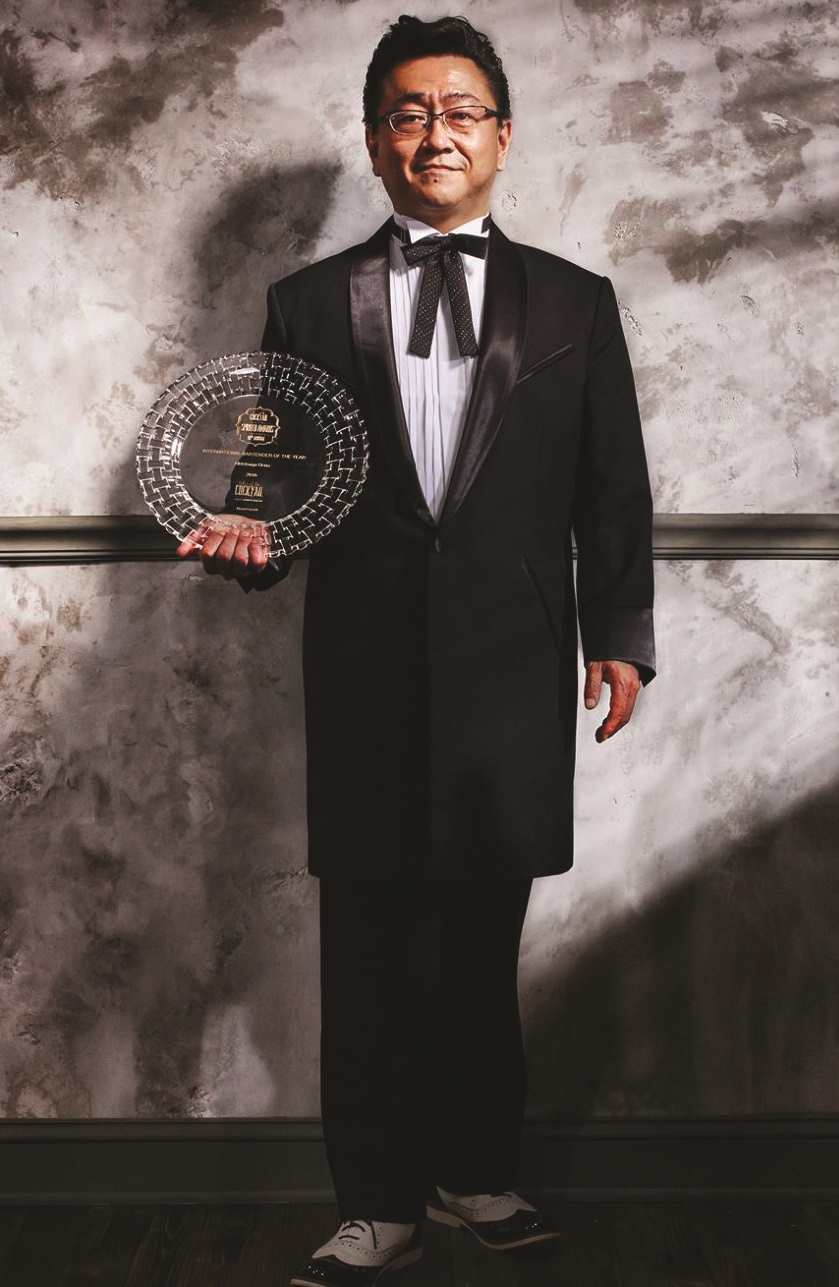_______________________________
AT TALES’ Spirited Awards, collecting the award for Best International Bartender stood an all-American figure – ’50s pompadour hairstyle and Colonel Sanders bow tie at one end and rock ’n’ roll dancing brogues at the other. It was Japanese bartender Hidetsugu Ueno.
Ueno is an Americanophile. If he had his way he’d have been a baseball player, not a bartender. That had been his dream since growing up with his mother in the countryside of the northern Japanese island of Hokkaido. “I was a left hand pitcher and I wanted to be a professional,” says Ueno. Eventually dreams made way for reality and Ueno went to university. But he didn’t have a career in mind. “I didn’t want to work at a regular company or have a career,” he says. “Which is very unusual for Japanese.”
As a student he had worked as a coffee brewer and harboured the idea of owning his own coffee shop. But at that time coffee culture in Japan was in its infancy and setting up a business in an economic bubble was going to be expensive. “I thought maybe I should serve alcohol in my coffee shop, then maybe I can make it a business.” On this decision his career would pivot.
“I wasn’t knowledgeable about alcohol because I didn’t drink or go to bars, so I went to bartender school for one month,” says Ueno. He soon found himself in a bottle service bar in Ginza, Tokyo. “It wasn’t a cocktail bar – we sold spirits by the bottle. My job was to stand in the corner – I got the bottles for them, I brought ice, I made snacks. It was a simple job but I learned very many things.”
This might make a young bartender shudder, but Ueno spent 10 years perfecting this most basic form of service – the whole of his 20s in fact. He refers to this as his “mental training” but it seems unimaginable that one of the most famous bartenders in the world had not made as much as one cocktail in his first 10 years in service. But behind the scenes, Ueno was learning to mix drinks. For five years he received training for cocktail competitions by the man who would later be his boss, Star Bar founder Hisashi Kishi.
That was the start of what might be the most successful partnership in Japanese bartending history. When Star Bar opened in December 2000, Kishi called on Ueno and together they created the most famous bar in Japan at the time. “It was a direction change from working for a bottle service bar,” says Ueno. “I learned everything from my time working at Star Bar. Techniques were just a part of it. Mr Kishi helped me to think about making drinks.”
It was here Ueno picked up Kishi’s Infinity shake (a type of figure of eight shake that aerates the liquid) and together they created diamond ice – for which Ueno is now internationally known. “It was Mr Kishi’s vision but I cut the first diamond – he couldn’t do it. For whisky on the rocks, Star Bar used 100% ice diamonds. I was carving 30-40 a day. I’ve trained many bartenders to do the diamond but I haven’t found anyone who can do it properly.”
By 2008, with Ueno spending more and more time abroad, it was time to separate from Star Bar and his partner Kishi. He opened a small space in Ginza that took its name from that old American baseball celebration, High Five.




